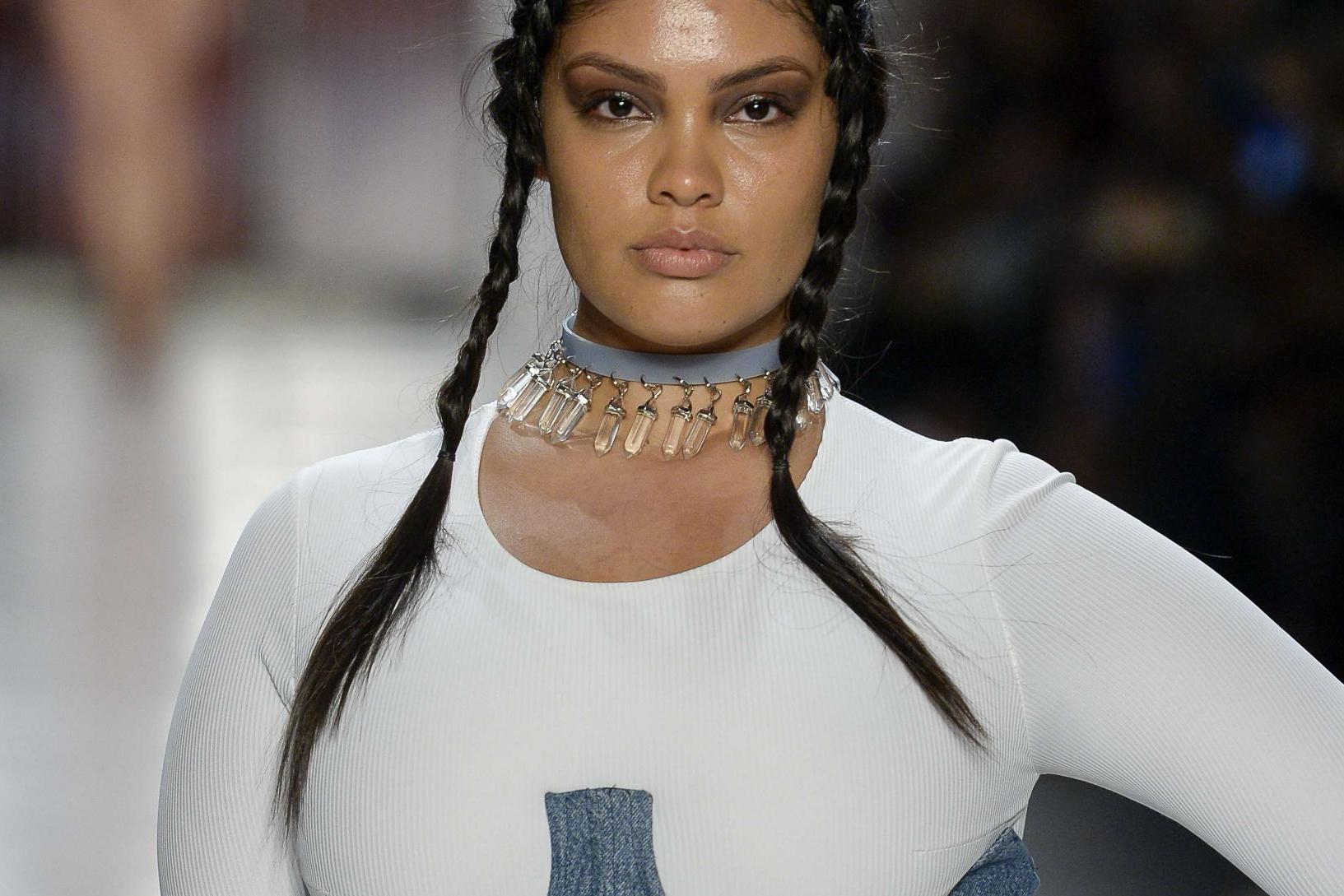The Independent's journalism is supported by our readers. When you purchase through links on our site, we may earn commission.
Plus-size modelling: Will high end fashion ever be ahead of the curve?
Is high fashion finally catching up with the high street?

Curvy women used to be banned from walking in catwalk shows, the world’s first plus-size supermodel recently revealed.
Emme Aronson, 54, walked in the bodywear label Chromat show at New York Fashion Week alongside fellow plus-size models, an event that never would’ve happened 20 years ago, the New Yorker explained at Curvy Con.
She praised the industry for embracing curvier girls and promoting body positivity.
But just how integrated are plus-size models when it comes to mainstream fashion?
With regards to runway, the answer has typically been: not very.
In the past, curvy girls that have been cast in shows have been perpetuated as the “token plus-size girl”.
Though a valiant attempt at disrupting fashion’s concrete traditions of using exclusively rail-thin models, it can feel like an all-too-obvious and fundamentally feeble attempt at body positivity.
For example, when Michael Kors cast Ashley Graham, size 18, in their autumn/winter 2017 show last season, did she assimilate seemlessly? Or did walking alongside the Bella Hadids and Edie Campbells of the world only amplify the issue at hand: the idea that plus-size models don’t fit into fashion.
The New York designer’s spring/summer 2018 show – which took place on Wednesday – saw Graham return to the runway alongside curve queen Kate Upton.
Progressive? Perhaps. But can we call employing two plus-size girls in a cast of 70 revolutionary? Probably not.
“We’re still seeing tokenism and we’re not yet seeing widespread acceptance of models across categories – models of various sizes, ages, races and gender identities,” Model Alliance director Sara Ziff recently told The Fashion Spot.
Kors did far more than other houses, however, who have famously shooed models away from castings for appearing too bloated – remember the Danish model who was told she was “too fat” for Louis Vuitton?
This season, however, it looks like things may be progressing – even if it is at a glacial pace.
First there was Chromat, then there was Christian Siriano, who arguably set the precedent for diversity this season, adorning his runway with women of all shapes and sizes, including 12 plus-size girls amid a roster of transgender and non-binary models – last season he cast five.
However, that’s two designers casting plus size models amidst a line up of more than 60 shows and presentations.
Can we really call this progress?
With a lot of high fashion designers producing samples at a meagre size six or below – some don’t even sell pieces above a size 10 – you could argue it makes sense to have slim girls modelling the clothes, since these are the women who are able to wear them.
However, what about brands like Stella McCartney, who go up to a size 18, and Burberry, who make clothes for size 16 women? Surely, if anyone’s going to be putting plus-size girls on the runway, it’s these designers, who actually sell clothes that will fit them?
Not only would putting plus-size girls on the catwalk boost public perceptions of a brand, but it would generate a flurry of press, explained Anna Shillinglaw, an agent at Milk modelling agency.
“The designers that do use curve girls will get more press than anyone else,” she told The Independent.
“It would literally be front page news, so someone needs to have the courage to do it. Remember when Mark Fast used curve girls in 2010? It was on the front page of every newspaper,” Shillinglaw explained.
Indeed, when Fast sent size 12-14 women down the runway in figure-hugging dresses alongside run-of-the-mill rakish models, critics praised the Canadian designer.
According to Shillinglaw, whose agency manages size 26 model Tess Holliday, the plus-size movement is yet to be fully embraced by high fashion brands.
“It’s definitely a high street thing at the moment,” she said. “Brands are doing it now because they realise it’s a million dollar industry but I think that designers aren’t there yet, some of them only go up to a certain size.”
River Island sells a range that goes up to size 28, whilst ASOS’s popular Curve range goes up to a size 30.
Then there’s Mango’s take, Violeta, which even has its own lookbook and campaign imagery.
When it comes to shows, however, body positivity advocates are still waiting for a revolution that may or may not come.
“New York seems to be much more ahead of us,” Shillinglaw said. “I would love to see Prada use a curve girl, or Burberry, wouldn’t that just be incredible? I mean, I’d cry!”
She isn’t throwing in the towel yet, as the model agent revealed that Milk has sent lots of their curve girls, who range from a size 12 to a size 26, to castings despite not being requested.
“We’re just throwing them in there so they can see how gorgeous they are,” she said.
So, when it comes to plus-size, will the times finally be a changin’?
London, we’re looking at you.
Subscribe to Independent Premium to bookmark this article
Want to bookmark your favourite articles and stories to read or reference later? Start your Independent Premium subscription today.

Join our commenting forum
Join thought-provoking conversations, follow other Independent readers and see their replies